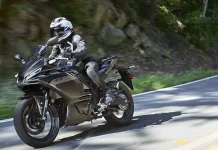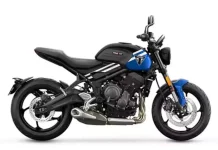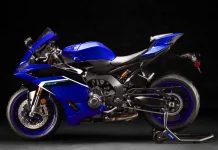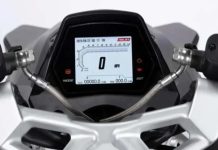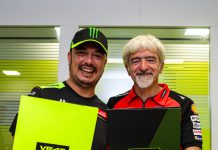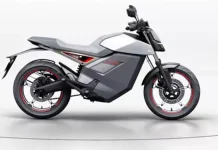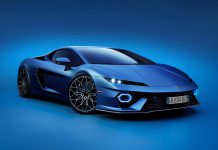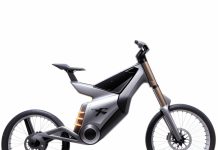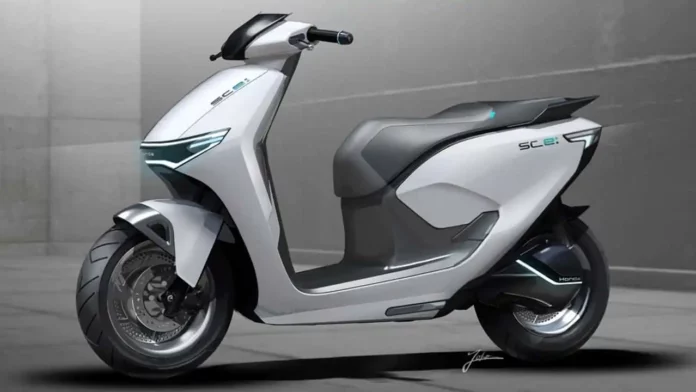Honda’s SC e Concept
Honda’s presentation at EICMA this year clearly underscores its commitment to diversifying its lineup with both traditional gasoline-powered models and innovative electric options. The range of models, including updates to the CB1000 Hornet, CB650R, CBR650R, CBR500R, Africa Twin, Fireblade, and the new NX500, highlights Honda’s ongoing dedication to enhancing their combustion engine lineup. This blend of updates and new introductions shows Honda’s effort to keep its conventional lineup fresh and appealing.
Key takeaways
- The SC e: Concept will be powered by Honda’s Mobile Power Pack e: batteries, which promise greater driving range than the EM1 e.
- The SC e: Concept is part of Honda’s plan to realize carbon neutrality by 2040.
- The SC e: Concept is being developed for motorcyclists with the A1 license restriction in Europe.
Additional details
- The SC e: Concept has a horizontal headlight and a different passenger footwell than the EM1 e:.
- Honda has not released any specific details about the SC e: Concept’s performance or range.
- The SC e: Concept is expected to be a more premium electric scooter than the EM1 e:, with a higher price tag.
Electric Mobility
The Honda SC e: Concept scooter, however, is a standout in terms of Honda’s shift towards electric mobility. Its comparison to the PCX 160 but with a more futuristic design suggests that Honda is aiming to blend familiar scooter ergonomics with a more modern, possibly even avant-garde, aesthetic. The mention of a resemblance to something from “Tron” paints a picture of a sleek, cutting-edge design, which is often appealing in the electric vehicle market.
Innovation with Interchangeable Battery System
Honda’s use of the Mobile Power Pack e: batteries in this concept is particularly interesting. It seems they are targeting not just performance but also practicality and convenience with the interchangeable battery system. This approach could address one of the main concerns around electric vehicles: range and charging convenience. By having a swappable battery system, Honda seems to be mitigating the range anxiety and charging inconvenience that can be associated with electric vehicles.

Sustainable Transportation
The commitment to achieving carbon neutrality by 2040 and the plan to unveil a final version of the SC e: Concept by 2025 align with global trends and increasing consumer demand for sustainable transportation options. The development of a scooter suitable for riders with an A1 license restriction in Europe is also a strategic move, considering the popularity of scooters in many European cities and the often strict licensing requirements.
Key Analysis
Let’s break down the key points from Honda’s presentation at EICMA and their broader strategy:
- Diverse Product Portfolio: Honda showcased a range of both gasoline-powered and electric models. This diversity caters to a wide array of customer preferences, from traditional combustion engine enthusiasts to those inclined towards eco-friendly, electric vehicles.
- Updates to Classic Models: The introduction of updated versions of popular models like the CB1000 Hornet, CB650R, CBR650R, CBR500R, Africa Twin, Fireblade, and the new NX500 indicates Honda’s commitment to maintaining and refreshing its core lineup. These updates likely include technological advancements, design tweaks, and performance improvements.
- Introduction of Electric Models: The Honda SC e: Concept scooter is a significant step towards electric mobility. Its futuristic design suggests an effort to make electric vehicles more appealing and trendy, potentially attracting a younger or more style-conscious demographic.
- Innovative Battery Technology: The use of Honda’s Mobile Power Pack e: batteries in the SC e: Concept highlights a focus on addressing common concerns about electric vehicles, such as range and charging convenience. The interchangeable battery system could be a game-changer in enhancing the practicality of electric scooters.
- Environmental Commitment: Honda’s goal for carbon neutrality by 2040 and the development of the SC e: Concept as part of this plan underscore the company’s commitment to sustainability. This aligns with global environmental trends and increasing consumer demand for greener transportation options.
- Targeting European Market Needs: The development of vehicles suitable for riders with an A1 license in Europe shows Honda’s strategic targeting of specific market segments. Scooters are highly popular in Europe, and catering to the licensing restrictions expands Honda’s market reach.
- Balancing Innovation with Tradition: Honda is balancing the need for innovation, particularly in the realm of electric vehicles, with the ongoing demand for traditional combustion engine models. This approach allows them to cater to both traditional customers and those seeking more environmentally friendly options.
Diverse Portfolio
Honda’s strategy and offerings at EICMA, as described, come with their own set of pros and cons:
Pros:
- Diverse Portfolio: Offering both gasoline and electric models allows Honda to cater to a wide range of customer preferences, capturing different market segments.
- Innovation in Electric Mobility: The introduction of the SC e: Concept and the focus on electric mobility positions Honda as a forward-thinking, innovative brand. This aligns with global trends towards sustainable transportation.
- Technological Advancements: The use of interchangeable battery systems in electric models addresses common concerns about range and charging, making these vehicles more practical for daily use.
- Brand Loyalty and Appeal: Updating popular models like the CB1000 Hornet and Africa Twin helps retain existing customers by offering modernized versions of the bikes they love.
- Environmental Responsibility: Commitment to carbon neutrality by 2040 demonstrates corporate responsibility and may attract environmentally conscious consumers.
- Market-Specific Solutions: Developing products tailored for specific markets, like scooters for A1 license holders in Europe, shows Honda’s attentiveness to diverse consumer needs.
Cons:
- Resource Allocation Challenges: Balancing the development of both electric and gasoline models can strain resources. Focusing on two fronts simultaneously may impact the level of innovation and advancement in each area.
- Market Readiness for Electric Vehicles: While there is a growing trend towards electric vehicles, some markets may still be hesitant due to concerns like charging infrastructure, limiting the immediate uptake of new models like the SC e: Concept.
- Cost Implications: Developing new technologies, especially in electric mobility, can be costly. These costs might be passed on to consumers, making these new models less accessible to a broader audience.
- Potential Brand Dilution: By trying to cater to both traditional petrolheads and eco-friendly consumers, Honda risks diluting its brand identity, which could potentially confuse or alienate certain customer segments.
- Competition: The electric vehicle market is increasingly competitive, with numerous manufacturers introducing innovative models. Standing out in this crowded space can be challenging.
- Technological Uncertainties: As electric vehicle technology is still evolving, investing heavily in a particular technology (like interchangeable batteries) carries risks if the market evolves in a different direction or if more efficient technologies emerge.
Conclusion
Honda’s strategy represents a careful balance between innovation and tradition, environmental responsibility, and market demand. While this approach has clear advantages in terms of market coverage and brand positioning, it also comes with challenges related to resource allocation, market readiness, cost, competition, and potential brand dilution.
The strategy as showcased at EICMA reflects a comprehensive approach to market demands and future trends. They are enhancing their traditional lineup while also boldly stepping into the electric vehicle market, all underpinned by a commitment to sustainability and technological innovation.
Overall, Honda’s display and announcements at EICMA reflect a blend of enhancing their established gasoline-powered models while also significantly investing in and moving towards electric mobility solutions. This strategy seems to cater to both current market demands and future-oriented environmental goals, positioning Honda as a versatile and forward-thinking player in the automotive industry.
Honda Motorcycles , Motorcycles Sports , YouTube – Honda Motorcycles Europe


